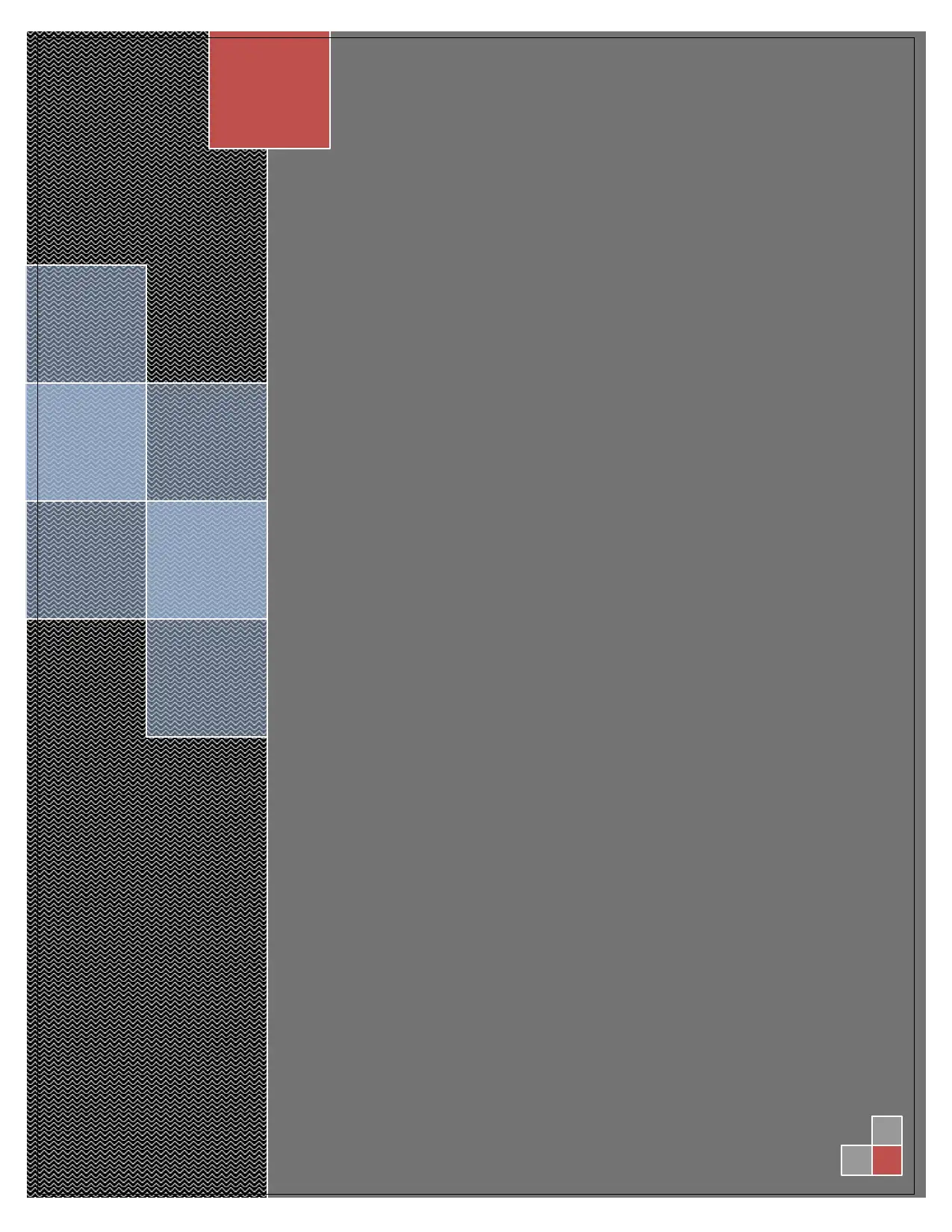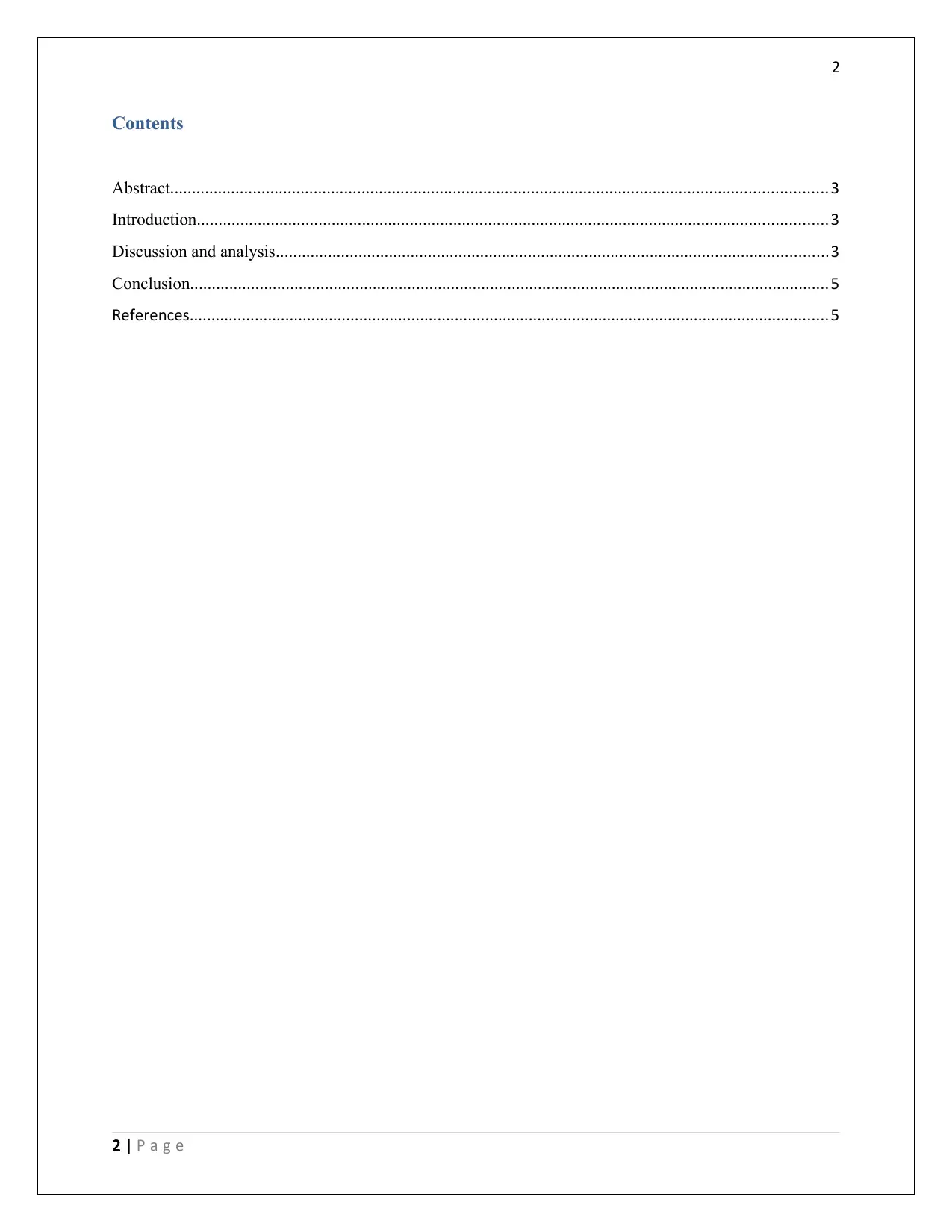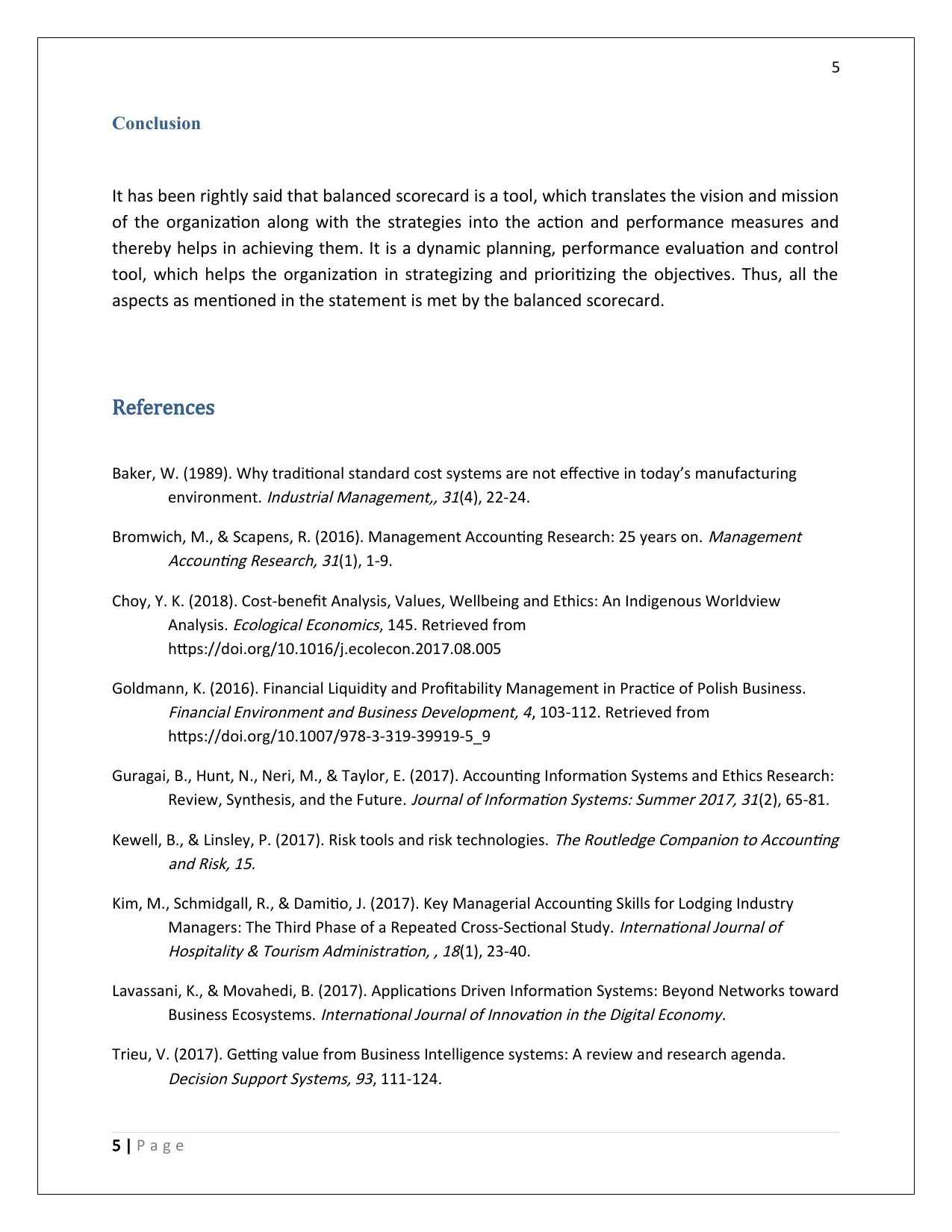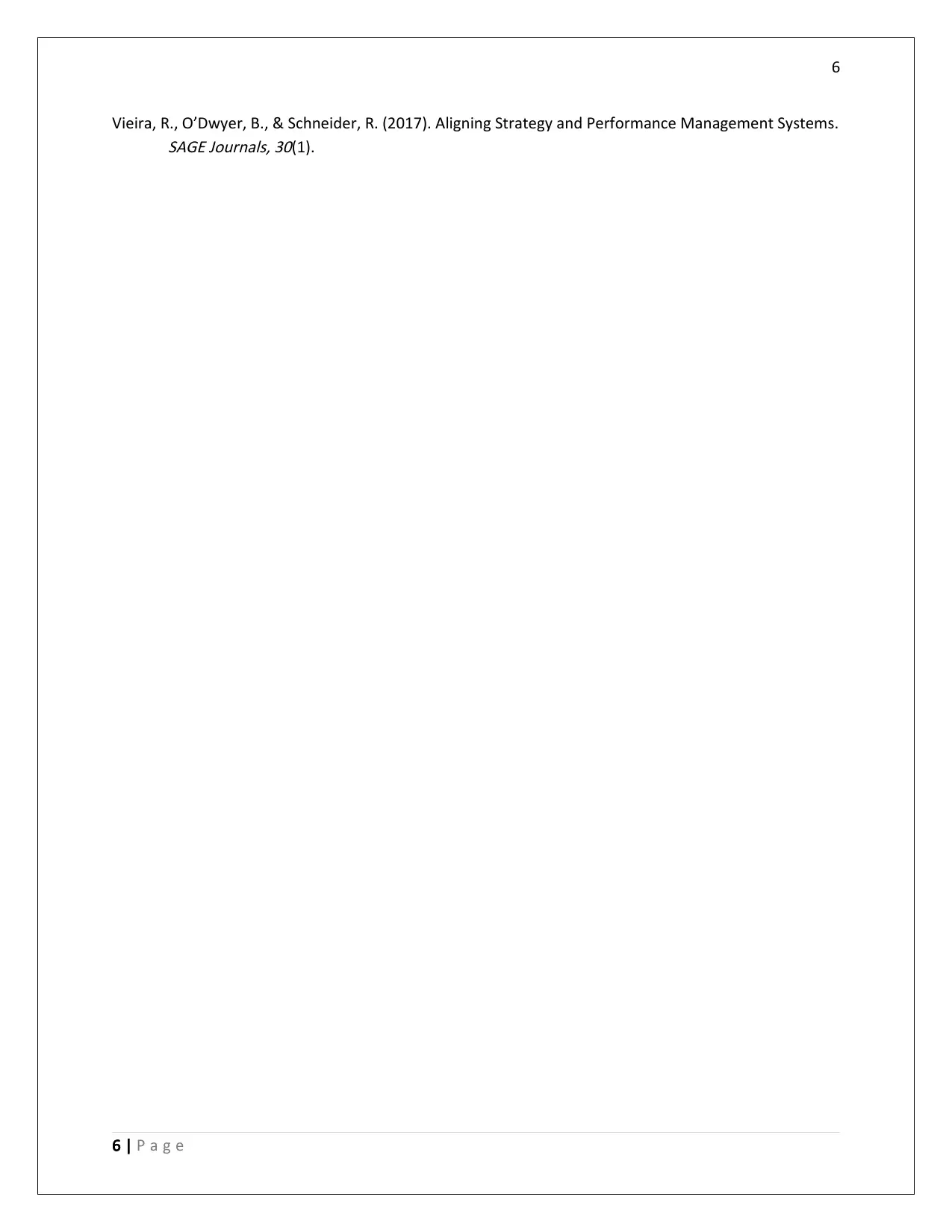Report on Balanced Scorecard as a Cost Controlling Technique
VerifiedAdded on 2023/06/04
|7
|1318
|190
Report
AI Summary
This report assesses the Balanced Scorecard as a management accounting and cost controlling technique, emphasizing its role in translating organizational vision and mission into actionable performance measures. It details the four key perspectives of the balanced scorecard: learning and growth, internal processes, customer perspective, and financial performance. The report highlights the Balanced Scorecard's effectiveness in planning, performance evaluation, and control by setting targets, tracking performance, and fostering employee motivation. It also underscores the tool's reliance on realistic market data and past performance to facilitate accurate predictions and create synergies. The conclusion reinforces the Balanced Scorecard's value in strategizing, prioritizing objectives, and driving organizational success.

Paraphrase This Document
Need a fresh take? Get an instant paraphrase of this document with our AI Paraphraser

1
By student name
Professor
University
Date: 25 April 2018.
1 | P a g e
By student name
Professor
University
Date: 25 April 2018.
1 | P a g e

2
Contents
Abstract.......................................................................................................................................................3
Introduction.................................................................................................................................................3
Discussion and analysis...............................................................................................................................3
Conclusion...................................................................................................................................................5
References...................................................................................................................................................5
2 | P a g e
Contents
Abstract.......................................................................................................................................................3
Introduction.................................................................................................................................................3
Discussion and analysis...............................................................................................................................3
Conclusion...................................................................................................................................................5
References...................................................................................................................................................5
2 | P a g e
⊘ This is a preview!⊘
Do you want full access?
Subscribe today to unlock all pages.

Trusted by 1+ million students worldwide

3
Abstract
A report has been prepared on the importance of the Balanced Scorecard as one of the
management accounting and cost controlling techniques. The report highlights how the
balanced scorecard technique is an effective cost control measure and how it helps the
organization in achieving the vision and mission by translating the planning to performance
measures and thereby achieving the final objective of profitability, survival and growth (Baker,
1989).
Introduction
The balanced scorecard may be as one of the management accounting techniques and strategic
tool, which is being used, identify the various internal functions within the organization and
thereby improving the same to derive the expected results. It is also used to measure the
performance of the organization over a period of time and drawing the results as to where be
the shortcomings. Here, data collection plays a very critical role as it is being used to set the
strategies and make better decisions (Bromwich & Scapens, 2016).
Discussion and analysis
The balanced scorecard generally runs of four legs, which have been mentioned below:
1. The first leg is the learning and growth, which also involves training and development of
the employees by sharing and expanding knowledge horizons. This helps the company in
gaining the competitive advantage in the industry (Goldmann, 2016).
2. The second leg deals with the processes and the techniques being used in the
organization. Better and more organized the processes better will be the outcome. This
checks the operational management aspect of the company like delivery processes,
ordering timelines, gaps and delays, etc. (Vieira, O’Dwyer, & Schneider, 2017).
3. The third leg is customer perspective and is considered the most important leg as
customer is the king and customer satisfaction is one of the critical objectives of
business. Some of the areas, which needs to be focused upon here, is quality, price,
availability of goods and services and variety as well. In addition, customer feedback and
suggestion is necessary (Trieu, 2017).
3 | P a g e
Abstract
A report has been prepared on the importance of the Balanced Scorecard as one of the
management accounting and cost controlling techniques. The report highlights how the
balanced scorecard technique is an effective cost control measure and how it helps the
organization in achieving the vision and mission by translating the planning to performance
measures and thereby achieving the final objective of profitability, survival and growth (Baker,
1989).
Introduction
The balanced scorecard may be as one of the management accounting techniques and strategic
tool, which is being used, identify the various internal functions within the organization and
thereby improving the same to derive the expected results. It is also used to measure the
performance of the organization over a period of time and drawing the results as to where be
the shortcomings. Here, data collection plays a very critical role as it is being used to set the
strategies and make better decisions (Bromwich & Scapens, 2016).
Discussion and analysis
The balanced scorecard generally runs of four legs, which have been mentioned below:
1. The first leg is the learning and growth, which also involves training and development of
the employees by sharing and expanding knowledge horizons. This helps the company in
gaining the competitive advantage in the industry (Goldmann, 2016).
2. The second leg deals with the processes and the techniques being used in the
organization. Better and more organized the processes better will be the outcome. This
checks the operational management aspect of the company like delivery processes,
ordering timelines, gaps and delays, etc. (Vieira, O’Dwyer, & Schneider, 2017).
3. The third leg is customer perspective and is considered the most important leg as
customer is the king and customer satisfaction is one of the critical objectives of
business. Some of the areas, which needs to be focused upon here, is quality, price,
availability of goods and services and variety as well. In addition, customer feedback and
suggestion is necessary (Trieu, 2017).
3 | P a g e
Paraphrase This Document
Need a fresh take? Get an instant paraphrase of this document with our AI Paraphraser

4
4. The fourth leg deals with the financial data and performance like those dealing with
sales, income, expenditure, assets, liabilities, etc. and the same need to be monitored
through a variety of measures like trend analysis, ratio analysis (Choy, 2018).
Balanced scorecard as a tool helps in planning as to what should be the sales, the prices, and
the strategy for the future course of action. As an instance, it sets out the objectives to be
achieved by the end of the year in terms of the learning and development and overall growth of
the employees and thus, it is an effective planning and controlling tool.
It sets the performance targets against each division and department in the organization and
against the particular personnel and employees. It gives the target to the managers and then
the evaluation is done at the end of the accounting year by measuring the actual performance
against the set standards. Thus, balanced scorecard also serves as an effective performance
evaluation and tracking tool (Kewell & Linsley, 2017).
It sets out the strategy for each of the four heads mentioned above with the timelines and the
responsibility centre or person who checks the same and puts the score or a percentage of
achievement against each of the mentioned factors based on the performance. Thus, it is
sometimes also called the dynamic strategic tool.
From the perspective of the employees, it sets them on right path and fixes responsibility along
with the timeline and awards including variable pay on the achievement of the targets. Since
they are aware of their role and what is to be done, there is no overlapping of duties and
responsibilities and the clarity of thought is ensured (Lavassani & Movahedi, 2017). This acts as
motivating factor for the employees as well as the management as a whole.
Balanced Scorecard is made by the organization on realistic basis and based on research and
analysis of the market data, industry trend and the past performance of the company in hand,
thereby making the predictive analysis on a realistic basis, which is achievable. Thus, it helps in
accurate and correct predictions as well (Guragai, Hunt, Neri, & Taylor, 2017).
Since balanced scorecard is always built in the range which is achievable and which is within the
ambit of laws and regulation and other constraints, it generally results in synergies in the
market and therefore it can be said that it results in cybernetic effects (Kim, Schmidgall, &
Damitio, 2017).
4 | P a g e
4. The fourth leg deals with the financial data and performance like those dealing with
sales, income, expenditure, assets, liabilities, etc. and the same need to be monitored
through a variety of measures like trend analysis, ratio analysis (Choy, 2018).
Balanced scorecard as a tool helps in planning as to what should be the sales, the prices, and
the strategy for the future course of action. As an instance, it sets out the objectives to be
achieved by the end of the year in terms of the learning and development and overall growth of
the employees and thus, it is an effective planning and controlling tool.
It sets the performance targets against each division and department in the organization and
against the particular personnel and employees. It gives the target to the managers and then
the evaluation is done at the end of the accounting year by measuring the actual performance
against the set standards. Thus, balanced scorecard also serves as an effective performance
evaluation and tracking tool (Kewell & Linsley, 2017).
It sets out the strategy for each of the four heads mentioned above with the timelines and the
responsibility centre or person who checks the same and puts the score or a percentage of
achievement against each of the mentioned factors based on the performance. Thus, it is
sometimes also called the dynamic strategic tool.
From the perspective of the employees, it sets them on right path and fixes responsibility along
with the timeline and awards including variable pay on the achievement of the targets. Since
they are aware of their role and what is to be done, there is no overlapping of duties and
responsibilities and the clarity of thought is ensured (Lavassani & Movahedi, 2017). This acts as
motivating factor for the employees as well as the management as a whole.
Balanced Scorecard is made by the organization on realistic basis and based on research and
analysis of the market data, industry trend and the past performance of the company in hand,
thereby making the predictive analysis on a realistic basis, which is achievable. Thus, it helps in
accurate and correct predictions as well (Guragai, Hunt, Neri, & Taylor, 2017).
Since balanced scorecard is always built in the range which is achievable and which is within the
ambit of laws and regulation and other constraints, it generally results in synergies in the
market and therefore it can be said that it results in cybernetic effects (Kim, Schmidgall, &
Damitio, 2017).
4 | P a g e

5
Conclusion
It has been rightly said that balanced scorecard is a tool, which translates the vision and mission
of the organization along with the strategies into the action and performance measures and
thereby helps in achieving them. It is a dynamic planning, performance evaluation and control
tool, which helps the organization in strategizing and prioritizing the objectives. Thus, all the
aspects as mentioned in the statement is met by the balanced scorecard.
References
Baker, W. (1989). Why traditional standard cost systems are not effective in today’s manufacturing
environment.
Industrial Management,, 31(4), 22-24.
Bromwich, M., & Scapens, R. (2016). Management Accounting Research: 25 years on.
Management
Accounting Research, 31(1), 1-9.
Choy, Y. K. (2018). Cost-benefit Analysis, Values, Wellbeing and Ethics: An Indigenous Worldview
Analysis.
Ecological Economics, 145. Retrieved from
https://doi.org/10.1016/j.ecolecon.2017.08.005
Goldmann, K. (2016). Financial Liquidity and Profitability Management in Practice of Polish Business.
Financial Environment and Business Development, 4, 103-112. Retrieved from
https://doi.org/10.1007/978-3-319-39919-5_9
Guragai, B., Hunt, N., Neri, M., & Taylor, E. (2017). Accounting Information Systems and Ethics Research:
Review, Synthesis, and the Future.
Journal of Information Systems: Summer 2017, 31(2), 65-81.
Kewell, B., & Linsley, P. (2017). Risk tools and risk technologies.
The Routledge Companion to Accounting
and Risk, 15.
Kim, M., Schmidgall, R., & Damitio, J. (2017). Key Managerial Accounting Skills for Lodging Industry
Managers: The Third Phase of a Repeated Cross-Sectional Study.
International Journal of
Hospitality & Tourism Administration, , 18(1), 23-40.
Lavassani, K., & Movahedi, B. (2017). Applications Driven Information Systems: Beyond Networks toward
Business Ecosystems.
International Journal of Innovation in the Digital Economy.
Trieu, V. (2017). Getting value from Business Intelligence systems: A review and research agenda.
Decision Support Systems, 93, 111-124.
5 | P a g e
Conclusion
It has been rightly said that balanced scorecard is a tool, which translates the vision and mission
of the organization along with the strategies into the action and performance measures and
thereby helps in achieving them. It is a dynamic planning, performance evaluation and control
tool, which helps the organization in strategizing and prioritizing the objectives. Thus, all the
aspects as mentioned in the statement is met by the balanced scorecard.
References
Baker, W. (1989). Why traditional standard cost systems are not effective in today’s manufacturing
environment.
Industrial Management,, 31(4), 22-24.
Bromwich, M., & Scapens, R. (2016). Management Accounting Research: 25 years on.
Management
Accounting Research, 31(1), 1-9.
Choy, Y. K. (2018). Cost-benefit Analysis, Values, Wellbeing and Ethics: An Indigenous Worldview
Analysis.
Ecological Economics, 145. Retrieved from
https://doi.org/10.1016/j.ecolecon.2017.08.005
Goldmann, K. (2016). Financial Liquidity and Profitability Management in Practice of Polish Business.
Financial Environment and Business Development, 4, 103-112. Retrieved from
https://doi.org/10.1007/978-3-319-39919-5_9
Guragai, B., Hunt, N., Neri, M., & Taylor, E. (2017). Accounting Information Systems and Ethics Research:
Review, Synthesis, and the Future.
Journal of Information Systems: Summer 2017, 31(2), 65-81.
Kewell, B., & Linsley, P. (2017). Risk tools and risk technologies.
The Routledge Companion to Accounting
and Risk, 15.
Kim, M., Schmidgall, R., & Damitio, J. (2017). Key Managerial Accounting Skills for Lodging Industry
Managers: The Third Phase of a Repeated Cross-Sectional Study.
International Journal of
Hospitality & Tourism Administration, , 18(1), 23-40.
Lavassani, K., & Movahedi, B. (2017). Applications Driven Information Systems: Beyond Networks toward
Business Ecosystems.
International Journal of Innovation in the Digital Economy.
Trieu, V. (2017). Getting value from Business Intelligence systems: A review and research agenda.
Decision Support Systems, 93, 111-124.
5 | P a g e
⊘ This is a preview!⊘
Do you want full access?
Subscribe today to unlock all pages.

Trusted by 1+ million students worldwide

6
Vieira, R., O’Dwyer, B., & Schneider, R. (2017). Aligning Strategy and Performance Management Systems.
SAGE Journals, 30(1).
6 | P a g e
Vieira, R., O’Dwyer, B., & Schneider, R. (2017). Aligning Strategy and Performance Management Systems.
SAGE Journals, 30(1).
6 | P a g e
1 out of 7
Related Documents
Your All-in-One AI-Powered Toolkit for Academic Success.
+13062052269
info@desklib.com
Available 24*7 on WhatsApp / Email
![[object Object]](/_next/static/media/star-bottom.7253800d.svg)
Unlock your academic potential
Copyright © 2020–2025 A2Z Services. All Rights Reserved. Developed and managed by ZUCOL.




